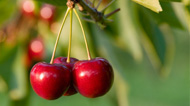As a woman your exercise program includes a variety of different needs that you want to meet. You want to loose excess body fat, tone, and build curves so that you look your best. Read on to discover how to get great curve fitness.
Women generally head to the machines for their workout and they usually choose a treadmill or step master and a multi exercise piece of equipment, as well as a few other machines. But what is very common is for a woman to walk right past the free weights.
Have you seen those infomercials where they are busy telling you that in just 4 weeks you can have that luscious sculpted body? Remember they tell you that your curve fitness is only several thousand dollars away but it comes with a training video. Exercise all your body parts without out ever changing equipment.
After doing some quick math do you decide to give up the gym membership and put the payment on your new miracle machine which will only take a few years to pay off and wow in no time you are going to have those vivacious curves from your curve fitness workout.
What would you say if I told you could do just that and only spend one payment? What would you say if I told you that you wouldn’t need to dedicate an entire room to your equipment? What would you say if I said free weights were your curve fitness workout and all that you need?
One of the biggest problems with those fancy machines besides cost is that they are complicated. They are hard to set up, hard to configure, hard to understand, and believe it or not it’s going to be hard to get that curve fitness.
For curve fitness you don’t need to spend a fortune and you don’t need a complex workout. With a proper workout you can get those vivacious curves in no time. And the great thing about free weights is the ease of changing the routines.
Although free weights are a cheap and easy way to get curve fitness there are other options. Pilates is another option that is affordable, requires little space, and it’s an easy way to create curves through the use of resistance.
For curve fitness that entails toning the abs there is good news and bad news. The bad news is that the abs are the hardest area of the body to get into shape but don’t give up it can be done with some serious determination. Now the good news is you require no equipment to work the abs. There are many exercises that can tone the muscles and walking or jogging helps burn calories.
You know that it seems it’s always the stomach that gets to hold all those calories and although they are the easiest spot to put the extra weight on they are the hardest to get rid of.
Now that you know how to get great curve fitness without spending a fortune and having to operate a complex piece of equipment.
 How to Use It
How to Use It
